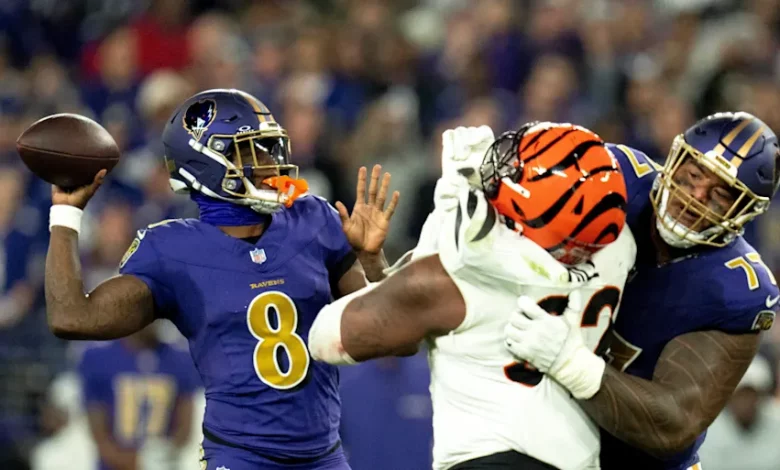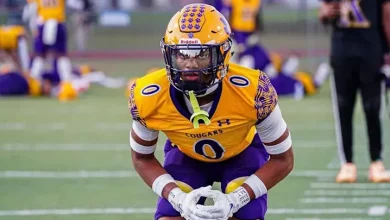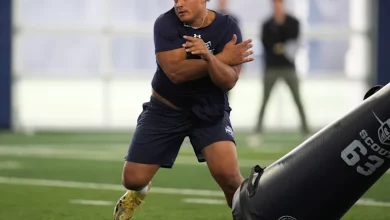How NFL Draft Strategy Is Affected by Baltimore Ravens Free Agency Decisions

The NFL offseason is a crucial period for teams to retool and rebuild their rosters. With free agency and the NFL Draft serving as the primary tools for roster construction, teams aim to bolster weak spots, maximize strengths, and set themselves up for a successful season. The Baltimore Ravens, a franchise with a strong history of competitive teams, have been particularly active in the free agency period in recent years. The moves made during free agency have significant implications for how the Ravens approach the draft, as free agency decisions shape both needs and available resources.
The 2023 NFL offseason has already seen the Ravens make significant strides through free agency. With key additions to their roster, the Ravens’ free agency moves have had a major impact on how analysts and fans view their draft strategy. By addressing some of their most glaring needs and securing key positions, the team has provided itself with more flexibility in the upcoming draft, allowing them to focus on areas of depth and value rather than targeting immediate needs.
In this article, we will examine how the Baltimore Ravens’ free agency decisions in 2023 have influenced their approach to the NFL Draft, focusing on key positions such as wide receiver, cornerback, edge rusher, and interior offensive line. We will explore how these decisions have reshaped the team’s priorities and how they are likely to use their draft capital to strengthen their roster for the 2023 season.
The Ravens’ Free Agency Moves: Key Acquisitions
Before delving into the specific ways that the Ravens’ free agency moves have impacted their draft strategy, let’s first take a look at some of the major signings the team has made during the 2023 offseason:
1. Odell Beckham Jr. – Wide Receiver
Arguably the biggest free agent signing of the Ravens’ offseason was wide receiver Odell Beckham Jr. Beckham, a former Super Bowl champion with the Los Angeles Rams, signed a one-year contract with Baltimore. His signing was a bold move to provide Lamar Jackson with a legitimate top-tier receiving option. Beckham, when healthy, is one of the most explosive wide receivers in the league and adds a dynamic playmaker to the Ravens’ offense.
The Ravens have long been criticized for their lack of a true number-one wide receiver. Despite having solid players like Rashod Bateman and Devin Duvernay, they’ve never had the type of star receiver who can consistently stretch the field and be a primary target for Jackson. Beckham’s addition changes that narrative. As an established star, Beckham will not only help with pass-catching but also elevate the play of other receivers on the roster. This signing gives the Ravens flexibility in the draft as they no longer have to focus on selecting a wide receiver early.
2. Rock Ya-Sin – Cornerback
One of the Ravens’ key needs heading into the offseason was depth at cornerback. With the aging Marcus Peters and the injury-prone nature of their secondary, Baltimore was in search of a dependable corner to shore up their pass defense. Enter Rock Ya-Sin, a former second-round pick who spent the past seasons with the Indianapolis Colts. Ya-Sin is known for his physicality, ability to press at the line of scrimmage, and solid ball skills. His signing provides the Ravens with another capable corner alongside Marlon Humphrey, thus strengthening their secondary.
Ya-Sin’s addition to the roster reduces the immediate need for cornerback depth in the draft. The Ravens can now focus on bolstering their pass rush, improving their interior defense, or addressing other areas of need without feeling compelled to select a cornerback in the early rounds.
3. Za’Darius Smith – Edge Rusher
One of the most impactful moves the Ravens made in free agency was the signing of edge rusher Za’Darius Smith. Smith, a Pro Bowl-caliber pass rusher, previously played for the Green Bay Packers and Minnesota Vikings, where he consistently racked up double-digit sacks. His signing is a huge boost for a Ravens defense that, although stout, has sometimes lacked a consistent pass rusher opposite Odafe Oweh.
The signing of Smith means that the Ravens are in a stronger position at the edge rusher position. With Smith on the roster, they no longer need to invest heavily in an edge rusher in the early rounds of the draft, allowing them to focus on other areas that need immediate attention.
4. Re-signing Key Players
Alongside the notable additions, the Ravens have also re-signed key players like Lamar Jackson (on a long-term deal) and Patrick Queen (to continue his development at linebacker). These re-signings ensure that the core of the team remains intact, minimizing the need for drastic changes at critical positions.
The Impact of Free Agency on the Ravens’ Draft Needs
With these moves in free agency, the Ravens’ roster has undergone significant changes. The acquisitions of Beckham, Ya-Sin, and Smith have addressed key needs, allowing the team to focus on drafting players who can contribute immediately or provide depth rather than taking chances on raw prospects to fill holes. Here’s how these free agency decisions are likely to shape the Ravens’ draft strategy:
1. Wide Receiver: Focus Shifts to Depth, Not a Primary Need
Before signing Beckham, wide receiver was one of the Ravens’ most urgent needs. Despite the presence of talented players like Rashod Bateman and Devin Duvernay, the team lacked a true No. 1 receiver who could consistently win one-on-one matchups and stretch the defense. This void created a need for the Ravens to look for a dynamic playmaker in the first or second round of the draft.
However, with Beckham now in the fold, the Ravens no longer have to prioritize this position in the draft. Beckham’s experience and proven ability to perform at the highest level give the Ravens a much-needed boost at receiver. The focus in the draft can now shift to adding depth behind Beckham and Bateman, rather than looking for an immediate starter.
While the team might still consider drafting a receiver in the later rounds (particularly if a player with high upside falls into their lap), the Ravens no longer have to make a wide receiver selection their top priority. This gives them the flexibility to address other areas of need, such as the defensive front or the secondary.
2. Cornerback: Less Urgency, Focus on Depth
Prior to the signing of Ya-Sin, the Ravens were widely expected to select a cornerback early in the draft. With an aging Marcus Peters and Marlon Humphrey in the secondary, Baltimore was at risk of entering the 2023 season with a thin cornerback group. The addition of Ya-Sin helps stabilize the position, providing the team with a proven starter who can pair with Humphrey, leaving Peters in a more complementary role.
The signing of Ya-Sin effectively reduces the Ravens’ need to target a cornerback in the first or second round of the draft. While cornerback depth is always valuable, the team now has the luxury of looking for a potential starter in the later rounds, rather than feeling compelled to address the position early. The Ravens can now prioritize other areas like pass rush, offensive line, or even running back depth.
3. Edge Rusher: Targeting Depth, Not a High-Priority Need
Pass rush has been an area of focus for the Ravens in recent years, particularly with the departures of Calais Campbell and Justin Houston. While Odafe Oweh has shown promise, the team has lacked a consistent edge rusher to complement him. The addition of Za’Darius Smith changes that dynamic, as Smith is capable of being an immediate impact player who can provide the Ravens with double-digit sack potential.
With Smith in place, the Ravens are no longer forced to take an edge rusher in the first round. Instead, they can focus on finding additional depth at the position or perhaps even targeting a developmental pass rusher in the later rounds. The signing of Smith means that the Ravens are in a better position to take the best player available rather than filling an immediate need.
4. Offensive Line: A Possible Draft Priority
While the Ravens have made significant strides in free agency, there is still one area of concern that remains—offensive line depth. The team has a strong starting unit, including Ronnie Stanley at left tackle and Kevin Zeitler at guard, but depth behind them is a bit thin. The Ravens could use the draft to strengthen their offensive line, particularly looking for a developmental interior offensive lineman or a tackle to add depth to the unit.
With the Ravens’ free agency moves addressing other critical needs, the offensive line could emerge as a priority in the draft, especially if a high-value lineman is available in the later rounds.
A Balanced Approach to the 2023 NFL Draft
The Ravens’ free agency decisions have fundamentally reshaped their draft strategy for 2023. The signings of Odell Beckham Jr., Rock Ya-Sin, and Za’Darius Smith have allowed the team to address key areas of need and provide depth at critical positions. As a result, the Ravens no longer need to prioritize wide receiver, cornerback, or edge rusher in the early rounds of the draft.
This newfound flexibility means that the Ravens can now take a more balanced approach to the draft, focusing on adding depth to their defense, offensive line, and other key areas. They can target the best player available while still looking to shore up their roster for the 2023 season.
Ultimately, the Ravens’ free agency moves have positioned them for success in the 2023 season, giving them the flexibility to draft smartly and build a roster capable of competing for a Super Bowl. By leveraging free agency effectively, the Ravens have ensured that their draft strategy will be both measured
and focused, with an eye toward sustainable success for the future.









